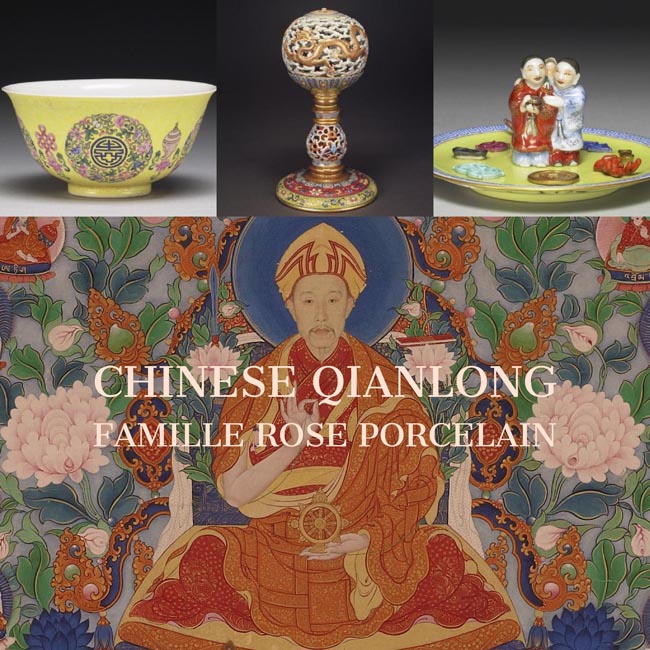Chinese Qianlong Famille Rose A Few Examples
Chinese Qianlong Famille Rose porcelain in the National Palace Museum collection, comprises perhaps the finest collection of its kind in the world. A few months ago we did a primer and a video on the history of Famille Rose decorations. If you  missed it go back and give it a look. On this page, we wanted to share some of the finest rarest examples extant from the Qianlong period.
missed it go back and give it a look. On this page, we wanted to share some of the finest rarest examples extant from the Qianlong period.
German Alchemists and Chinese Innovation
The process for making Famille Rose enamels was discovered in Germany and brought to China by Jesuits during the late Kangxi period (1662-1722). After this, it was the Chinese who exploited this knowledge to levels never equalled any place on earth. They also did it in an incredibly short period of time, less than 20 years. The Germans figured out how to make it, the Chinese taught the world how to use it.
The colour ranges made possible by Famille Rose was an instant success with the Imperial Court during the Yongzheng period (1723-1735). Soon, workshops for decorating blank made to order porcelains was built within the Palace grounds. The Emporer was the arbiter of taste for the entire country.
The popularity of these colours with their soft clear tones and pure hues quickly created demand by consumers throughout the globe. The resulting global trade for "export" orders combined with demand inside China from the Emporer's court to the upper classes produced a massive and lucrative industry. An industry that by the Qianlong period (1736-1795) had expanded to thousands of workshops and kilns employing tens of thousands of workers fulfilling orders around the clock.
The demand was further increased during the 18th C. with the seemingly endless shapes and forms that could be achieved by potters combined with these fabulous colours.
During this era, China's expanded trade with the West quickly made the Qianlong Emporer the wealthiest person on earth by a wide margin. It also vastly expanded the West's interest in Chinese cultural taste including not only porcelain but woodworking, silver, silk and paintings. While the tea and spice trade remained the core economic driver, it was China's artistic sensibilities and expertise that grabbed the imaginations of those in distant lands. The influence of this adopted taste and interest can be seen to this day throughout Europe and the America's.
Imperial Taste: Chinese Qianlong Famille Rose Porcelain
The Qianlong Emporer was perhaps the most involved patron of the arts the world has ever known. His scholarly pursuits and interest in the arts knew no apparent boundaries.
His constant encouragement of artists working in all mediums resulted in an unprecedented bounty of objects, including those who made porcelain. As a result, the shapes, styles and construction of ceramic objects were produced in highly complex forms, all of which pleased the Emporer. Innovative colour combinations were tried, as were innumerable and endless glaze combinations. Some resulted in objects of intense beauty and elegance, while others were more for pure amusement than actual ceramic art.

Below are just a few of the objects produced during the Qianlong period. CLICK on the Images to enlarge.
To See more, Visit the National Palace Museum The Art of Qianlong
Chinese Qianlong Famille Rose Porcelain From The Palace Museum
[foogallery id="1423"]
